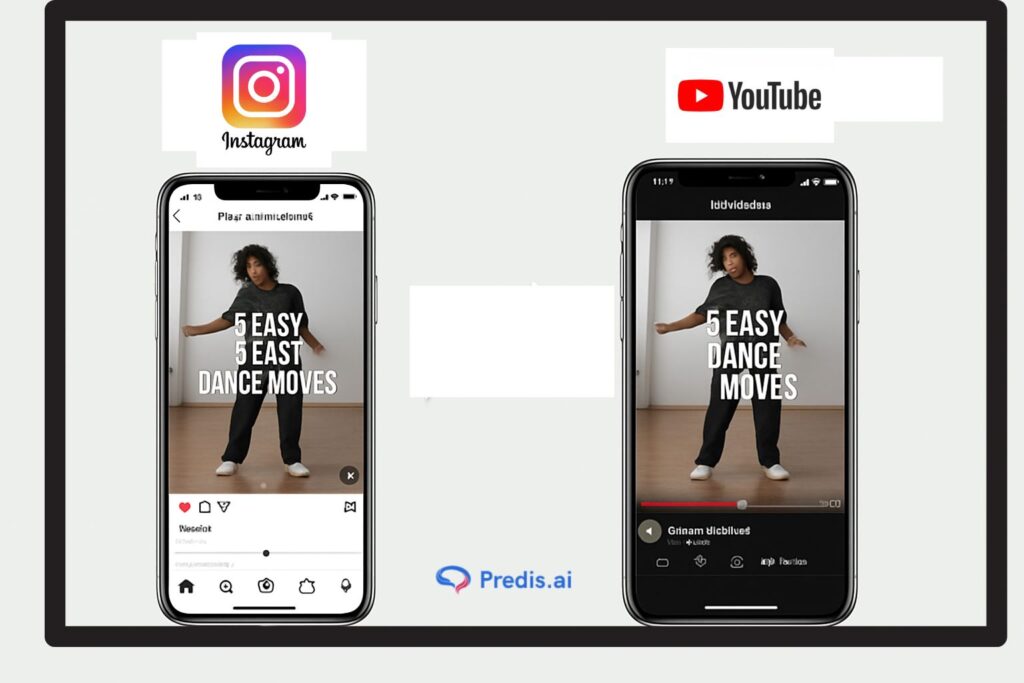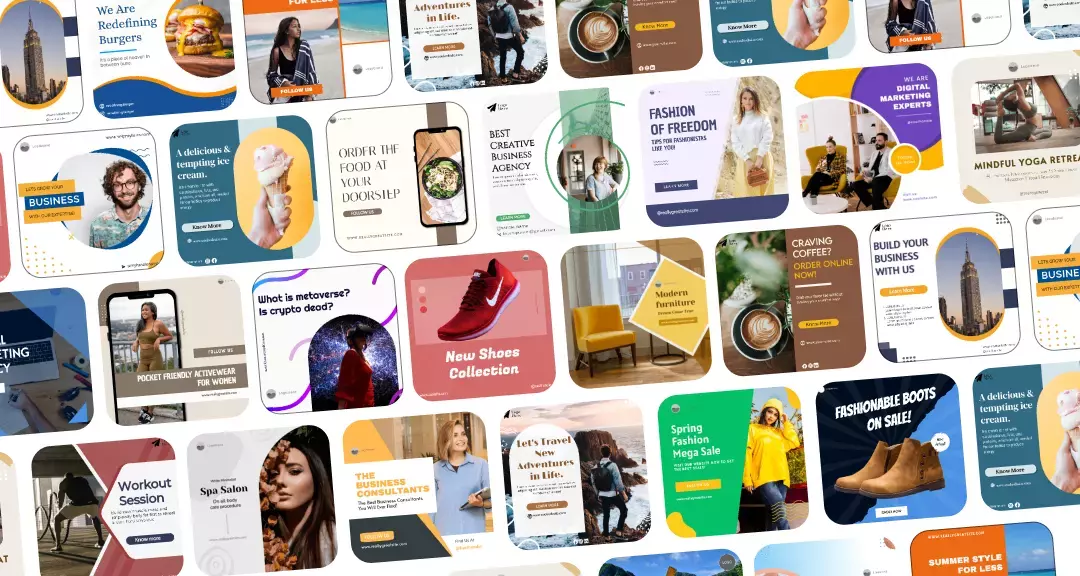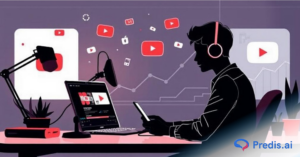Short-form video has become the language of social media. From Instagram Reels to YouTube Shorts, audiences everywhere are consuming quick, engaging clips that deliver entertainment or value in under a minute. These formats aren’t just trends anymore, they’re shaping how people discover, connect with, and follow creators.
For creators, the challenge is keeping up without burning out. Making fresh content for every platform is exhausting and often unsustainable. Repurposing changes the game: it saves time, maximizes the reach of a single video, and helps you stay visible where your audience spends their time. Instead of constantly reinventing the wheel, you’re working smarter and expanding your impact.
In this blog, we’ll break down how to take your Instagram Reels and repurpose them into YouTube Shorts. You’ll learn the key differences between the two platforms, how to adjust your content for each, and what tools can make the process easier. By the end, you’ll have a clear strategy to grow your presence on both platforms without doubling your workload.
TL;DR 🖋
Repurposing Instagram Reels into YouTube Shorts saves time, expands your reach, and helps you grow across platforms. Focus on evergreen content, adjust editing for YouTube’s audience, optimize titles and thumbnails, use AI tools to streamline the process, promote across channels, and track performance to refine your strategy. Consistency plus smart distribution equals scalable growth. How to Repurpose Instagram Reels into YouTube Shorts?
- Pick Reels That Have Long-Term Value
- Tweak Your Edits for YouTube’s Audience
- Leverage YouTube’s Titles, Thumbnails, and Tools
- Use AI to Speed Up Repurposing
- Promote Across Platforms to Grow Faster
- Track Results and Keep Refining
Understanding Instagram Reels and YouTube Shorts
In order to successfully convert Instagram content to be fit for posting on YouTube, you need to understand the unique features and requirements of both Instagram reels and YouTube Shorts.

Here’s a breakdown to help you successfully convert Instagram content to YouTube:
| Aspect | Instagram Reels | YouTube Shorts |
| Audience behavior & platform goals | Geared toward fast, trend-driven content that entertains and hooks users scrolling the feed. Strong focus on discovery through trends and audio. | Aims to keep viewers engaged within the YouTube ecosystem. A more diverse audience, often looking for value, education, or longer creator journeys |
| Algorithmic focus: discovery vs. retention | The algorithm prioritizes trending sounds, hashtags, and viral potential to boost quick discovery | Algorithm rewards retention, click-through rate, and watch time to grow a creator’s channel. |
| Video length, dimensions, and captions | Up to 90 seconds, vertical (9:16). Captions are usually short and hashtag-heavy | Up to 60 seconds, vertical (9:16). Titles and descriptions allow for longer text, keywords, and links for SEO |
Stand Out on YouTube Shorts with AI Content 🌟
How to Repurpose Instagram Reels into YouTube Shorts?
Below are steps to repurpose Instagram reels into YouTube shorts efficiently:
1. Choosing the Right Reels to Repurpose
Not every Reel belongs on YouTube. Start by looking at your analytics to see which videos have consistent engagement and staying power. Reels that only perform because of a trending sound or a fleeting meme may fall flat on YouTube. Instead, prioritize evergreen content—tutorials, tips, entertaining skits, or educational clips—that will still make sense weeks or months later. These translate better into Shorts and can attract new viewers over time.
Example:
A Reel showing “5 quick desk stretches to relieve back pain” can work well on Shorts, because it’s evergreen and useful. But a Reel using a trending dance meme with no context may lose relevance fast on YouTube.
2. Editing Adjustments for YouTube Shorts
A direct repost can look sloppy. Before uploading, make sure your video fits YouTube’s 9:16 frame properly and doesn’t crop important visuals. Add a strong hook in the first few seconds—attention spans are short, and YouTube’s algorithm rewards videos people watch until the end. You might also need to tweak pacing: Reels often lean on quick, flashy edits, but Shorts benefit from slightly clearer storytelling that keeps viewers engaged.
Example:
If your Reel starts with text halfway through the screen, reframe it so the text sits clearly in the YouTube safe zone. Add a strong opening line like: “Want to grow your channel in 30 seconds? Here’s how.” That keeps viewers from swiping away.
3. Optimizing for YouTube Features
Titles, descriptions, and hashtags carry more weight on YouTube than on Instagram. Use clear, keyword-rich titles that explain the value of the video at a glance. Add detailed descriptions with hashtags and links to your other content. Thumbnails are another big difference: while Instagram relies more on autoplay, YouTube depends on clicks. A custom, eye-catching thumbnail can make or break your Short. Finally, take advantage of YouTube’s own features—music, captions, or speed adjustments—to polish your video for the platform.
Example:
Reel title: “Outfit of the Day ✨” → YouTube Short title: “5 Casual Outfit Ideas for College Students”.
Instead of relying on the default video frame, design a thumbnail with bold text like “College Outfit Hacks” over a clean image.
4. AI and Automation Tools for Repurposing
Repurposing doesn’t have to be time-consuming. AI tools can resize videos, auto-generate captions, and even create thumbnails in minutes. This cuts down the repetitive work and lets you focus on creativity. The key is balance: use automation to handle formatting and technical details, but still bring your personal touch to storytelling and branding so your Shorts feel authentic.
Example:
Use AI to automatically crop your Reel into YouTube’s aspect ratio, then quickly generate captions. After that, customize the caption style or add branded elements (like your logo watermark) so it feels unique to your channel.
5. Cross-Promotion and Distribution Strategy
Don’t just upload and forget. Use Instagram Stories, captions, or pinned comments to direct your existing followers toward your YouTube channel. Mention that you’re posting extended or exclusive content there to encourage cross-platform engagement. Small reminders like CTAs (“watch the full video on YouTube”) help funnel your audience from one platform to the other and grow your subscriber base.
Example:
Post a Story teaser: “Loved this tip? The full 1-minute breakdown is now live on my YouTube channel—swipe up to watch.” Or pin a comment under your Reel: “See this styled differently on YouTube Shorts 👇 link in bio.”
6. Tracking Performance and Refining Strategy
Repurposing is an ongoing process. After posting, check your analytics on both Instagram and YouTube. Look at metrics like watch time, retention, and comments to see which videos travel best across platforms, and see which is better Reels or Shorts. If a certain type of content consistently performs well, double down on it. If something falls flat, adjust your editing or posting strategy. Over time, these insights help you refine your repurposing approach and get more mileage out of every video you create.
Example:
If your “Quick recipe hacks” Reels do well on both Instagram and YouTube, create a content series around it. But if your meme-style Reels flop on YouTube, focus more on evergreen tutorials instead.

How Predis.ai Simplifies Repurposing Reels into Shorts?
Repurposing content isn’t just about copying and pasting—it’s about making small but important adjustments so your video feels native to each platform. That’s where a tool like Predis.ai comes in.

With Predis.ai, you can automatically reformat your Instagram Reels into YouTube’s vertical 9:16 layout without losing quality. It also generates captions and subtitles, which matter a lot since many people watch Shorts on mute. Beyond formatting, Predis.ai makes it easy to design custom thumbnails, helping your video stand out in YouTube’s crowded feed.
Here’s how it fits in with repurposing Instagram Reels into YouTube Shorts:
- Automatic resizing and formatting – It can adjust your Instagram Reel to YouTube’s 9:16 vertical format, keeping the quality intact.
- Captions and subtitles – Predis.ai can auto-generate captions, which are important for Shorts since many users watch without sound.
- Thumbnails – It has tools to design custom thumbnails quickly, which boosts click-through on YouTube.
- Content adaptation – You can tweak the tone, style, or text overlays to better suit YouTube’s audience, instead of just copy-pasting the Reel.
- Cross-platform posting – It can schedule and publish your content to multiple platforms, saving you time.
Conclusion
Repurposing Instagram Reels into YouTube Shorts allows you to extend your content’s impact across platforms. By comprehending content trends and algorithm differences on each platform, identifying the right content, and optimizing your videos for YouTube’s features, you can transition your content to a broader audience.
Strategic cross-promotion and community engagement further expand your content’s reach. Continuously evaluate your reel and shorts performance metrics to refine your approach and adapt your content strategy for success across different social media platforms.
For all your repurposing needs, the power of AI has your back. Automated creative content generator tools like Predis AI can help you seamlessly repurpose your Instagram reel content for YouTube shorts, allowing you to focus on the creative process and retain the maximum number of viewers.















